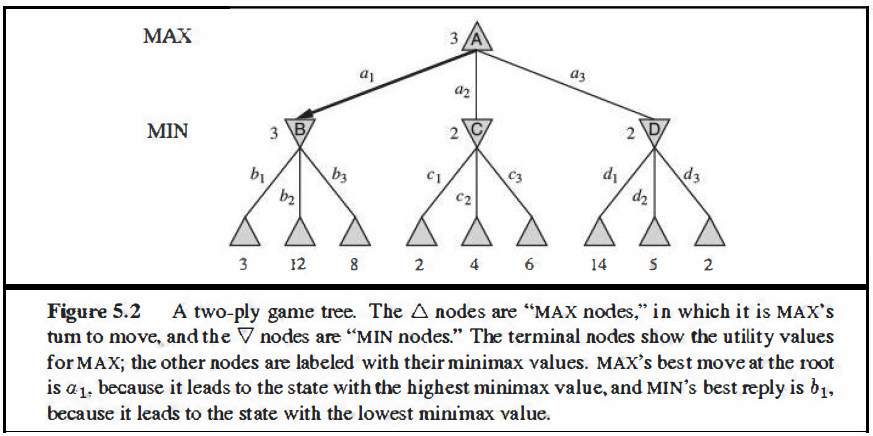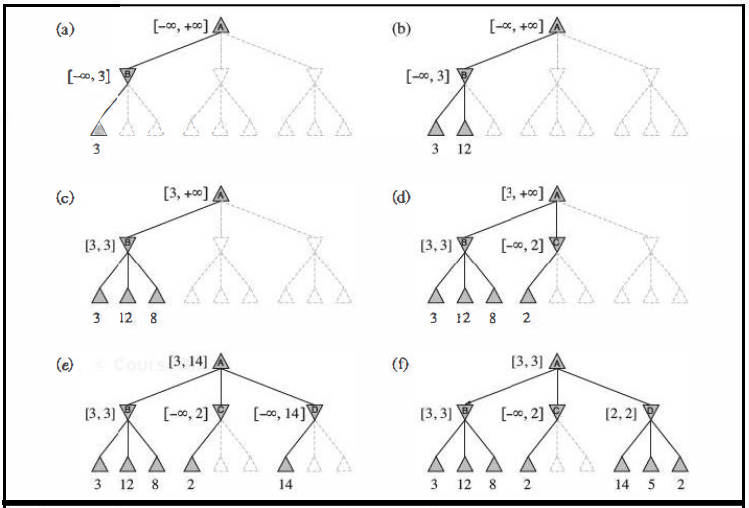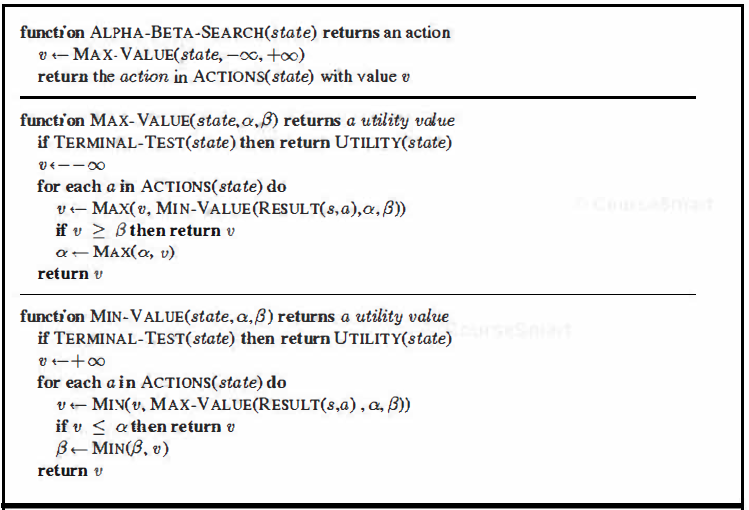Alpha Beta Pruning
Alpha-Beta Pruning: ALPHA-BETA pruning is a method that reduces the number of nodes explored in Minimax strategy. It reduces the time required for the search and it must be restricted so that no time is to be wasted searching moves that are obviously bad for the current player. The exact implementation of alpha-beta keeps track of the best move for each side as it moves throughout the tree. We proceed in the same (preorder) way as for the minimax algorithm. For the MIN nodes, the score computed starts with infinity and decreases with time. For MAX nodes, scores computed starts with -infinity and increase with time.
The efficiency of the Alpha-Beta procedure depends on the order in which successors of a node are examined. If we were lucky, at a MIN node we would always consider the nodes in order from low to high score and at a MAX node the nodes in order from high to low score. In general it can be shown that in the most favorable circumstances the alpha-beta search opens as many leaves as minimax on a game tree with double its depth.

Consider the two-ply game tree from Figure 5.2. Let’s go through the calculation of the optimal decision once more, this time paying careful attention to what we know at each point in the process. The steps are explained in Figure 5.5. The outcome is that we. can identify the minimax decision without ever evaluating two of the leaf nodes.
Another way to look at this is as a simplification of the formula for MINIMAX. Let the two tmevaluated successors of node C in Figure 5.5 have values x and y. Then the value of the root node is given by

In other words, the value of the root and hence the minimax decision are independent of the values of the pnmed leaves x and y.
Alpha-beta pruning can be applied to trees of any depth, and it is often possible to prune entire subtrees rather than just leaves.

Figure 5.5 Stages in the calculation of the optimal decision for the game tree in Figure 5.2. At each point, we show the range of possible values for each node. (a) The first leaf below B has the value 3. Hence, B, which is a MIN node, has a value of alriWst 3. (b) The second leaf below B has a value of 12; MIN would avoid this move, so the value of B is still at most 3. (c) The third leaf below B has a value of 8; we have seen all B’s successor states, so the value of B is exactly 3. Now, we can infer that the value of the root is at least 3, because MAX has a choice worth 3 at the root. (d) The first leaf below C has the value 2. Hence, C, which is a MIN node, has a value of at most 2. But we know that B is worth 3, so MAX would never choose C. Therefore, there is no point in looking at the other successor states of C. This is an example of alpha-beta pruning. (e) The first leaf below D has the value 14, so D is worth at most 14. This is still higher than MAX’s best alternative (i.e., 3), so we need to keep exploring D’s successor states. Notice also that we now have bounds on all of the successors of the root, so the root’s value is also at most 14. (f) The second successor of D is worth 5, so again we need to keep exploring. The third successor is worth 2, so now D is worth exactly 2. MAX’s decision at the root is to move to B, giving a value of 3.
Alpha-Beta algorithm: The algorithm maintains two values, alpha and beta, which represent the minimum score that the maximizing player is assured of and the maximum score that the minimizing player is assured of respectively. Initially alpha is negative infinity and beta is positive infinity. As the recursion progresses the "window" becomes smaller. When beta becomes less than alpha, it means that the current position cannot be the result of best play by both players and hence need not be explored further. Pseudocode for the alpha-beta algorithm is given below.

Figure 5.7 The alpha-beta search algorithm.